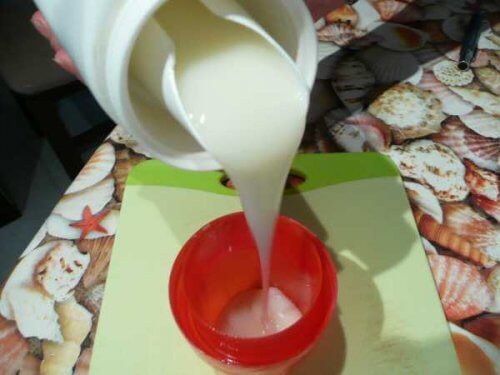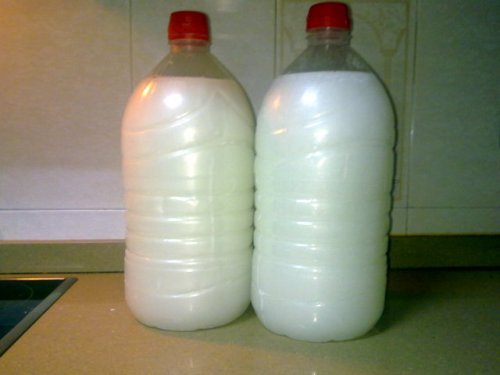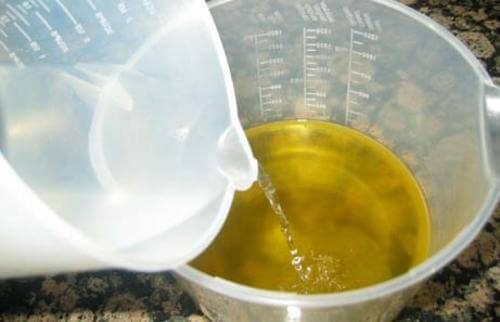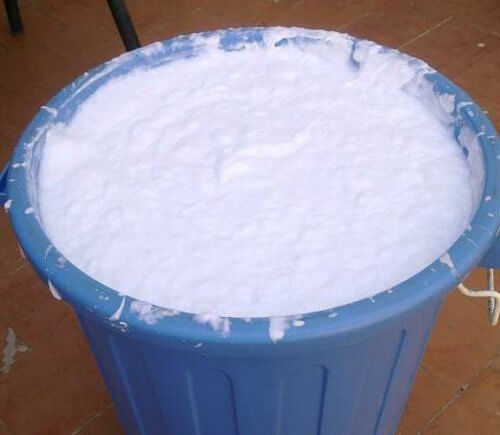How to Make Homemade Liquid Soap

Liquid soap has become one of the most popular cleaning products on the market, not just because it’s so easy to use, but because it makes washing clothes much easier.
Since it became widely available, it’s been so successful that most people prefer it over conventional bar soap.
It’s been shown that many of the ingredients in liquid soap are highly polluting, however, and can even cause certain skin allergies after coming into contact with it.
Fortunately, there are 100% natural recipes that can help you save money without risking your health or that of the environment.
Thanks to the properties of a few ingredients you probably have around the house, you can make an environmentally friendly soap that’s recycled and free from aggressive compounds. Since we know a lot of you are probably interested in learning how to make it, we’ll share the steps for how to do it at home.
Are you ready?
Homemade Liquid Soap

The recipe for this liquid soap is very interesting, not just because it will leave your clothes immaculately clean but because it’s also a way to recycle used vegetable oil from your kitchen.
You already know that you shouldn’t dispose of this waste through your sink drain because once it solidifies, it can cause clogs and other problems.
If you combine it with other ingredients like water and caustic soda, however, you obtain a very high-quality product.
See also: 6 Great Uses for Baking Soda
Ingredient
- 700 g of caustic soda
- 13 liters (about 3.5 gallons) of water
- 2 liters (1/2 gallon) of used vegetable oil
- 2 liters (1/2 gallon) of environmentally friendly liquid soap
- 500 g of sodium percarbonate (optional)
- Your favorite essential oil/s (optional)
Utensils
- Gloves and goggles
- A large plastic bucket or bowl
- A wooden spoon or whisk
Preparation

- First of all, you need to choose a ventilated area that’s easy to clean in the event that you spill any of the product.
- Wear protective gloves and goggles to avoid any accidents involving the substances you’re handling.
- Add two liters of cold water to the bucket, and mix the 700 grams of caustic soda little by little. Blend them using a wooden spoon or whisk, taking care not to breathe in the vapors that are emitted.
- When the caustic soda is dissolved in water, add the two liters of vegetable oil and continue stirring until you have a uniform mixture.
- Make sure the mixture is well-mixed and add the two liters of organic liquid soap.
- If you like, you can also add scented essential oils to give it a pleasant aroma.
- Finally, add the percarbonate, if desired, to give your soap an extra bleaching effect.
- After it reaches the desired consistency, store the product in a dark location and let it sit until the following day.
- Then, after 24 hours, stir the soap with a wooden spoon. Add another two liters of water, and let it stand for another day. After this time, you’ll notice that the soap has thickened and has a consistency similar to mayonnaise.
- Add another two liters of water and repeat this procedure every day for six to eight days. Do this until the product has a texture similar to that of shampoo.
- Finally, you can cover it and use it!
We recommend reading: 6 Oils that Promote Hair Growth
The Advantages of Homemade Liquid Soap

This is a perfect product for cleaning your clothes, as it won’t damage the fabric and can eliminate the most difficult stains.
It’s also multipurpose and can be used to clean floors, the kitchen, and other spaces throughout your home.
You’ll be able to save a lot of money with this homemade liquid soap because you no longer need to invest in expensive commercial brands. Even better, you’ll be recycling old cooking oils.
You’ll also be caring for your health and the beauty of your skin because you won’t be exposed to the chemical additives contained in commercial soaps.
Have you tried this yet? We invite you to follow the steps above so you can make your own organic products without too much effort. Collect the materials you need and follow the recommendations here to obtain the best results.
All cited sources were thoroughly reviewed by our team to ensure their quality, reliability, currency, and validity. The bibliography of this article was considered reliable and of academic or scientific accuracy.
- Regla, I., Vázquez, E., Cuervo, D., & Neri, A. (2014). La química del jabón y algunas aplicaciones. Revista Digital Universitaria.
- Castañeda Narváez, J. L., Hernández Orozco, H. G., Castañeda-Narváez, J., & Hernández-Orozco, H. (2016). Lavado (higiene) de manos con agua y jabón. Acta Pediátrica de México. https://doi.org/10.18233/APM37No6pp355-357
- [email protected]. (2014). Saponificación :: Grasas y Aceites Vegetales.
This text is provided for informational purposes only and does not replace consultation with a professional. If in doubt, consult your specialist.








